AT&T officially loses over 10 years of my business
Tags: 3G, AT&T, blackberry, mifi, Novatel, Playbook, tetheringI’ve been an AT&T customer for a very long time; over a decade of mobile phone use with their services, from my age’ing Nokia to my various Treo devices to several RIM BlackBerry phones.
I’m currently on the biggest, baddest Enterprise “Unlimited” data, “Unlimited” texting plan they offer, including International Roaming and texting as well, for when I travel overseas. I also have a second line for data only, which I use in my Novatel MiFi device, a SIM card previously plugged directly into my laptop so I could get online while on the train traveling to/from the office.
I recently picked up a BlackBerry PlayBook to use for work, and have been hacking on it a little bit. One thing that was lacking, was “always-on” Internet service. You have to use WiFi or tethering to get the tablet onto the Internet. In fact, you can’t even use the tablet at all unless it’s connected to a wireless network of some kind.
I just called AT&T to see what the additional cost would be to add “Tethering” to my existing phone features. The cordial operator told me that my current “Unlimited” plan is costing me $30.00/month, and to add the “Unlimited + Tethering” package, it would be $80.00/month (a $50.00/month increase).
I’m floored that I’d have to pay an additional $50/month for something that is no different than using my existing phone to browse the web. In other words, there’s no difference at all in the bits-and-bytes coming across the 3G connection if I browse the web via my phone’s browser, or browse the web via the PlayBook (or my laptop), through my phone’s 3G connection over bluetooth, via tethering.
The operator spoke to her supervisor and came back and told me that if I added tethering to my current “Unlimited” plan, I’d lose the unlimited capability, it would drop to 2GB/month, max, and I could never go back to an unlimited plan ever again, if I changed it now.
Read the rest of this entry »
My first two hours with the BlackBerry Playbook
Tags: blackberry, Playbook, QNX, RIM, tablet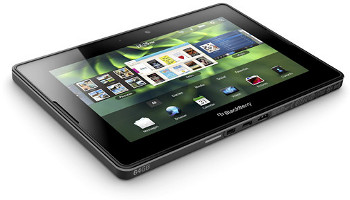 I picked up a BlackBerry Playbook today to test, review and attempt to integrate it into my business workflow. After all the hype, pre-release videos and hundreds of reviews I’ve read prior to its launch this week, I knew this was going to be the right tablet device for me.
I picked up a BlackBerry Playbook today to test, review and attempt to integrate it into my business workflow. After all the hype, pre-release videos and hundreds of reviews I’ve read prior to its launch this week, I knew this was going to be the right tablet device for me.
Boy was I wrong.
Here’s a list of the issues I’ve seen/found with it so far:
- When you first connect the device to power and power it on, you’re prompted with a few questions on the initial screens. You can’t get past Step 1 unless you have an active wireless connection, full-stop. There’s no cancel button, skip, bypass or abort that screen. No wireless, no tablet. Period. You basically have an expensive piece of plastic and glass, but not much more.
Once you do pair it to wireless, it immediately fetches the latest version of the Tablet OS, as expected, installs and reboots it, no issues. It then asks if you own a BlackBerry device, and prompts you to download and install the “BlackBerry Bridge” software onto your phone. It offers the on-screen QCR barcode you can scan and download BlackBerry Bridge to pair it with your Playbook… except… if you’re an AT&T customer.
FAIL!
Read the rest of this entry »
Another Good Idea Implemented Poorly (this time, from Case-Mate)
Tags: Battery, binder, blackberry, Case-Mate, mobile, Palm OSI’ve been looking around for a GOOD case for my BlackBerry Bold 9000 and 9700, and ran across a few that were pretty durable. I like the cases at Seidio and they’ve never done me wrong for my Palm OS devices, batteries and accessories.
Then I found… the Fuel and the (new) Fuel Lite, from Case-Mate. It looked like exactly what I was after to protect the BlackBerry and give it an extra little boost of battery life, with the integrated battery and charging circuit.
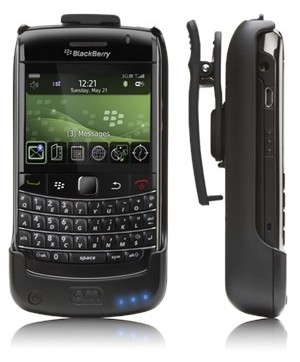
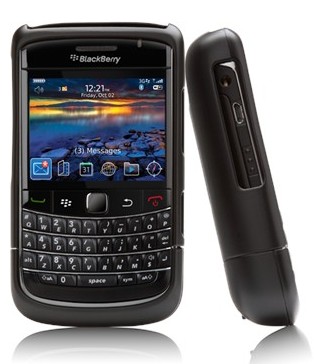
Do you see the big problem with these two cases? The screen faces out!!
Read the rest of this entry »
My First 15 Minutes with DriveSafe.ly for BlackBerry
Tags: blackberry, DriveSafe.ly, mobile I recently stumbled upon an app called “DriveSafe.ly” while perusing some new software in the BlackBerry App Store the other day.
I recently stumbled upon an app called “DriveSafe.ly” while perusing some new software in the BlackBerry App Store the other day.
From their page:
DriveSafe.ly reads your text messages and emails out loud so you can concentrate on the road. Eliminate the temptation to reach for your phone by letting DriveSafe.ly read to you and automatically respond for you.
Stay connected by listening to your messages without texting while driving or reading emails in your car. DriveSafe.ly is the answer to texting while driving TWD .
For even more functionality download DriveSafe.ly Pro – also available on BlackBerry® App World. DriveSafe.ly Pro adds the ability to use additional voices, listen to text messages and emails without sponsor messages and much more!
Read on for more of the Pros and Cons of this piece of software…
Read the rest of this entry »
Testing the Speed of BlackBerry Tethering Against My Own Networks
Tags: blackberry, VMwareI’ve been a long-time Cingular customer with my phones, and when they converted to AT&T, everything got wildly complex.
My normal monthly phone bill is hovering between $225.00 and $250.00 each month (yes, really… see below):
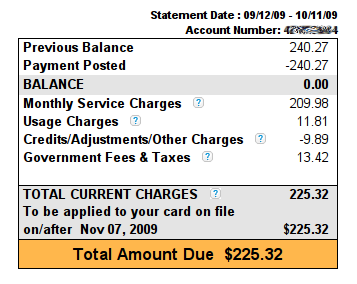
This bill consists of my handheld (BlackBerry Bold, $99/month unlimited data + voice + text) + SIM card (inside my laptop, $59/month unlimited data). Since this is effectively two SIM cards, it counts as two separate “phones”.
Oddly though, the one inside the laptop still gets the 9-1-1 surcharge, even though there’s no way I could “dial 9-1-1” from the laptop. If I’m in any sort of emergency situation, the last thing I’m going to do, is fire up the laptop, connect to the LAN, launch Skype and call 9-1-1 from there. But they still charge me $0.35/month for that “privilege”.
I use the laptop while traveling on the train to the office, but when I suspend the laptop and resume it, the Linux “sierra” driver does not wake the SIM card back up. There is no known fix, and I tend to have to close out all of my apps, suspend my VMware sessions, power off and reboot to wake the SIM card back up. Not fun.
I wanted to try to reduce the bill, and spent about 2 hours on the phone today with a lovely woman “Sue” from AT&T to try to discuss my possible options. There are a few, but all have downsides (reduced cost, but reduced minutes or increased minutes, but lose my 20% company discount and so on).
So I’ve been testing tethering my BlackBerry to my Linux laptop, using any number of tools (wvdial, XmBlackBerry, Berry4all).
This does work, if you configure it properly. I ran into lots of trouble with it originally, because /etc/ppp/options had some conflicting options that my hand-written, optimized “blackberry” chatscript didn’t work well with. Once I figured that out, it latched right up immediately.
Writing data size: 4 Modem -> [0x41 0x54 0x48 0xd ] [ATH.] Waiting for PPPD shutdown to complete. Hangup (SIGHUP) Connect time 3.2 minutes. Sent 200888 bytes, received 1852094 bytes. Script /etc/ppp/ip-down started (pid 9381) sent [LCP TermReq id=0x3 "User request"] Script /etc/ppp/ip-down finished (pid 9381), status = 0x0 Network stats thread completed. sent [LCP TermReq id=0x4 "User request"] Connection terminated. Modem hangup PPPD finished
At this point, I could use my BlackBerry as a modem for my laptop and get around the suspend/resume bug with the Linux Sierra driver, but that comes at a price (literally and figuratively).
My laptop’s “phone contract” doesn’t expire until March 2010, and I pay about $53/month for that, and the early termination fee is $175.00. I could cancel that now, and save $90.00, but then I’d have to pay $60.00 for the “unlimited data + tethering” package. I already have a $30 “unlimited data” package on my BlackBerry, and so that would be a net add of $30.00 to the existing $99.00 plan already on there.
But what exactly is the “tethering package” that AT&T offering, doing for me? What am I paying $60/month for? I can tether today. It works. I can continue to consume the data on the data plan side of things, so why pay for tethering?
Basically I’d be saving $23.00 over the cost of a $225+ phone bill, after paying $175 to get out of the existing contract. You can see where this is going.. because AT&T has put some serious mathematicians behind figuring this out, so they can extract every single nickel and dime from your personal monies to pad their coffers.
I wanted to do some speed tests to see what the actual performance gain/loss would be across my local WiFi segment, my laptop’s onboard AT&T card (using the aforementioned “Sierra” driver), and the BlackBerry tethered to the laptop using ppp to “dial out” to the Internet.
Here are the results:
Speed using my home WiFi Connection:
Fast, strong, solid speeds. No complaints, and I use it every day to push gigabytes of data around.
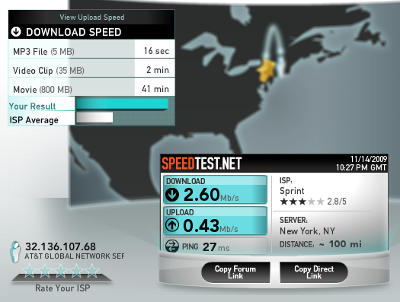
Speed using my BlackBerry tethered to my laptop:
As you can see, the speed is disgustingly slow here. Absolutely useless for anything more than telnet or ssh, and barely even good enough for that.
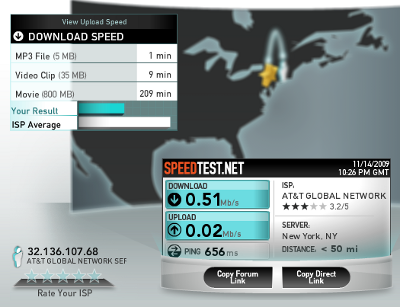
Speed using the onboard AT&T SIM card inside my laptop:
The speed here is reasonable, and acceptable for working on the train.
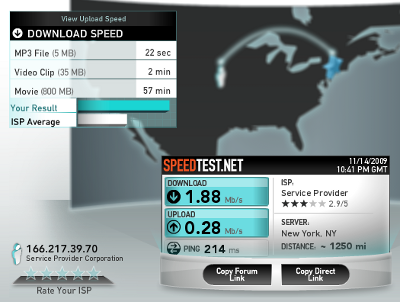
I just can’t continue to stomach the costs of the whole set of services anymore. $200+/month for a standard phone bill with no overage charges is ridiculous.
From what “Sue” at AT&T told me, everyone who uses a BlackBerry or an iPhone with an unlimited data plan, pays roughly the same amount. I’m skeptical.
I’m going to play with the tethering/ppp options to see if I can’t get some more performance out of it, and roll through to March and discontinue the service that my laptop is currently consuming.
The real question though, is how can AT&T tell if I’m not just using my BlackBerry to stream a ton of data (like through Pandora for BlackBerry), or if I’m tethering?
